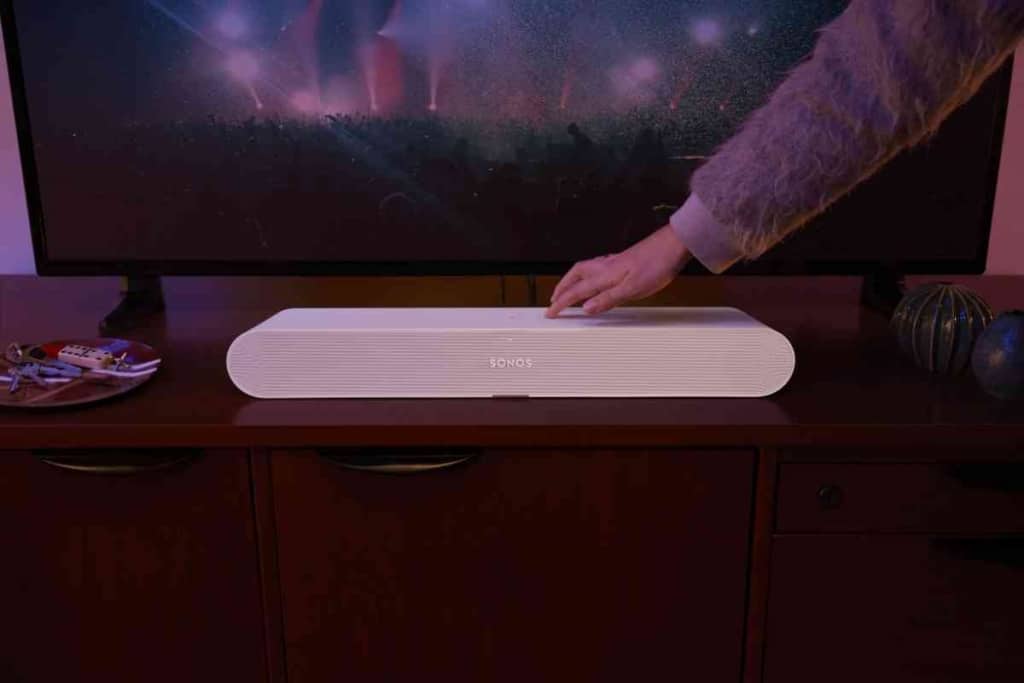Sonos Speakers Suddenly Stop Working? 3 Reasons & 4 Solutions

Due to their exceptional features, Sonos speakers have gained enormous popularity. Sometimes, they may stop working suddenly. Sono speaker’s popularity is attributed to the company’s increased user-friendliness, connectivity, and compatibility with significant and diverse entertainment services. However, despite their excellent reputation, Sono speakers can sometimes fail you when they stop working.

Table of Contents
- Why have my Sonos speakers suddenly stopped working?
- How To Fix One of Five Sonos Speakers Suddenly Stop Working
Why have my Sonos speakers suddenly stopped working?
Sono speakers can suddenly stop working due to a network loop, wireless interference, and audio drop-out. To fix the issue, reboot the devices, conduct a factory reset, identify one speaker as the primary speaker, or unplug all devices.
The solutions mentioned above are virtually certain to restore the functionality of your Sono speaker. However, if you have exhausted all possible solutions and the problem persists, you should consider contacting Sono’s customer support team.
Occasionally, the issue may be too complex to resolve from the convenience of your home. Also, ensure you carefully read the manual. You may find that the problem is maybe from connectivity which is avoidable.
Due to their superior audio quality and Wi-Fi connectivity, Sonos speakers deliver a truly unique musical experience. The speakers offer a unique musical experience, excellent audio quality, and a Wi-Fi connection.
However, like other electronic devices, you may periodically encounter issues with your Sonos system. But before finding a fix to the problem, you need to find the root cause. You cannot treat an undiagnosed issue.
Therefore, here are several potential causes for a Sonos speaker to suddenly stop working:
A Network Loop
A loop can occur when multiple Sonos speakers are connected to a network. A network loop is characterized by several pathways between two or more points.
In other words, these speakers can sometimes be connected to your Wi-Fi via an Ethernet cable and then connected using Sonos connect, a wireless signal.
Here is a practical explanation:
Suppose you have three Sonos speakers, which we’ll refer to as speaker A, speaker B, and speaker C. Speakers A and B connect to the router via Ethernet cable, and the remaining three speakers have Wi-Fi connections.
Speakers A and B receive a signal via a cable connection from the router and wirelessly from each other. Both speakers A and B transmit two signals wirelessly to speaker C.
In this case, a network loop will arise since the broadcast messages will circulate continually, overwhelming other devices with data, thus hindering them from working correctly.
The speakers will be puzzled by such a complex interaction in which they get signals from several links. In the same case, you get confused when many people speak to you simultaneously.
A network loop is exactly what it sounds like and can cause your Sonos speaker to malfunction. If you have many Sonos players at work or home, only one should be plugged in first, or you risk creating a loop.

Wireless Interference
Your Sonos system may be suffering wireless interference due to poor wireless connectivity. Wireless interference may arise when two or more wireless devices battle for the same Wi-Fi range.
Having robust Wi-Fi connectivity is essential to having a smooth music experience.
Audio Drop Out
Alternately, audio drop-out due to synchronization issues or audio playback malfunction due to insufficient bandwidth could cause one of your Sonos speakers to malfunction.
How To Fix One of Five Sonos Speakers Suddenly Stop Working
Now that you are aware of the possible causes for why one of your Sono speakers stopped working, you can move on to finding a remedy. Typically, finding a solution involves a process of trial and error. Therefore, if one strategy fails, proceed to the next.
It is also crucial to remember that some fixes can be complex, although the majority are relatively simple. Please utilize Sono’s customer assistance if you are uncertain how to proceed.
Here are the most prevalent ways of fixing your Sono Speakers:
Rebooting
Rebooting devices may provide a workaround, but the problems will possibly recur. To restore control of the situation before pursuing a long-term solution. In this situation, the tried-and-true off-on process is your best ally. Proceed as follows:
- Unplug the Sonos speaker or power cable from the outlet’s rear.
- Allow a minute for the speaker to turn off totally.
- Plug in the speaker
- Allow a minute for the speaker to power on
Once the speaker is on, it should resume working as usual. This technique should address numerous problems. If not, try performing a factory reset.
Factory Reset
While many people are always skeptical about performing a factory reset on their devices, it is a direct way to fix your devices. The best part is that restoring your Sonos speaker to factory settings is relatively straightforward.
It merely requires unplugging and replugging the device and pressing its buttons.
This process requires patience, though.
Since each Sonos speaker is unique and has different buttons, the technique for resetting the factor will vary depending on the device. Here’s how to reset your Sonos speaker to factory settings, depending on the type you own.
How to Reset the Sonos One to the Default Settings
The factory reset procedure for the Sonos One, Five, One SL, Beam, Sub, Arc, Port, and Amp is the same. The technique also applies to select Sonos speakers from the past, including the Play: 5 (gen-2) and Playbase. Here’s how to reset all settings to factory defaults:
- Remove the speaker from the circuit
- Spend a few seconds depressing the Connect key
- Reconnect the speaker to its power supply
- Hold the Connect key until the light on the speaker begins to flicker white and orange.
- When the light flashes green, the speaker has been reset.
How to Reset the Sonos Play:1 to the Default Settings
The Sonos Play:1, Play:5 (gen-1), Play:3, Connect, Playbar, and Connect: Amp have identical factory reset procedures. Here’s how to reset all settings to factory defaults:
- Remove the speaker from the circuit.
- Press and hold the Play/Pause to reconnect the speaker to its power supply.
- Hold down the Play/Pause key until the speaker’s light begins to glow white and orange.
- When the lights on the speaker flashes green, the speaker has been reset.
How to Reset The Sonos Move to the Default Settings
Resetting the Move and Roam portable speakers by Sonos to factory settings requires a somewhat different approach. Because the buttons on the Move and Roam are distinct, the factory reset procedures for each device are precise. To reset the Move, perform the following steps:
- Ensure that the speaker is powered on and unplugged.
- Press and retain the power button for at least five seconds to turn it off.
- Reconnect the speaker by holding the pairing button-down
- Hold down the pairing button until the light on the speaker begins to flicker white and amber.
- When the LED flashes green, the speaker has been reset.
Identify one speaker as the primary speaker
The best way to ensure a similar occurrence doesn’t happen is to designate one Sonos gadget as the “controller” and hardwire it while leaving the others wireless.
Thankfully, Sonos devices now can disable Wi-Fi, which can be accessed through the Sonos app’s device settings. Without a wired connection, turning off Wi-Fi would completely disconnect the device from the network.
Hence, the option is unavailable until the device detects a network cable connection. When configuring several wired Sonos speakers, configure them individually and deactivate their Wi-Fi.
Unplug all devices
Start troubleshooting by disconnecting all Sonos devices if your connection ever exhibits loop-like characteristics.
If this resolves the issue, restore each one individually to ensure that a software upgrade did not erroneously activate the Wi-Fi connection.